Church bells appear in a range of ways within folklore. Sometimes they continue to ring far beneath the waves in a church under the sea. Or perhaps their peeling in the darkness guided a lost traveller back to the path and away from danger. In some tales, they’re stolen by the Devil, or by mermaids.
Other times, they’re stolen by people. That’s the case in Northumbrian folklore, in which the Brinkburn Bells now ring in Durham Cathedral. That lies some 37 miles to the south of the original priory.
Or do they?
As with any legends, other versions exist that place the lost church bells in the nearby river Coquet. Perhaps the water carries the ringing of bells as it winds its way through Northumberland.
Either way, several tales of the Brinkburn Bells resound through local folklore. So let’s take a trip to the quiet spot in Northumberland and see what we can find.
Where is Brinkburn?
Brinkburn Priory lies around 24 miles north-west of Newcastle upon Tyne, or 4 miles south-east of Rothbury. It sits alongside the River Coquet in the Northumberland parish of Brinkburn. The parish lies to the east of the Simonside Hills, where you might encounter the duergar.
William de Bertram, baron of Mitford, founded Brinkburn Priory in around 1113. He dedicated it to St Peter and Augustinian monks ran the priory. Ten canons actually lived here at the time of the Dissolution of the Monasteries (Richardson 1841: 53).
It’s worth hearing what MA Richardson had to say about Brinkburn in 1846.
“Its recluse situation; the extreme stillness, undisturbed, except by birds and the murmurs of the Coquet; fragments of sepulchral monuments; the gloomy shade of the venerable ivy and the evergreens, with which, in many parts, the ruins are crowned and overgrown, give a solemnity to the place, and display an agreeable combination of objects, impressively grand and picturesque, inspiring the beholder with a contemplative melancholy”
1846a: 222
Richardson also makes the claim that “Brinkburn grove was probably devoted to the worship of Jupiter, ere the Christian priests, in this secluded retreat, begun the holy vespers to the Blessed Virgin” (1846a: 223). He references Roman ruins in the area, but his heavy reliance on ‘probably’ means we can’t necessarily take these claims seriously.
Location, Location, Location
Being so close to the Scottish border, just twenty miles away to the north-west, the monks often faced the threat of raids. Their remote location in the valley was certainly helpful in keeping them hidden. The value of land in the area plummeted after a series of Scottish raids that devastated farms and villages.
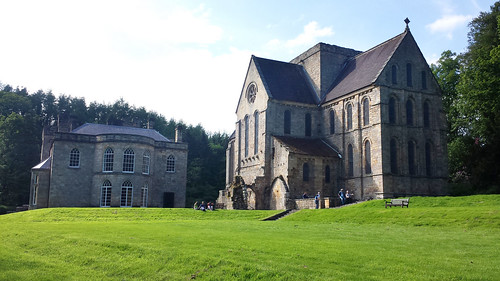
During one such raid, the monks gathered in the priory. They knew the raiders didn’t care about divine retribution. Gold and silver were gold and silver, no matter the source. The monks prayed that the raiders would pass by the priory and leave them in peace.
They watched the columns of smoke that marked the location of each raided village. To their surprise, the columns started appearing further and further away. Apparently, their prayers had been answered.
One version of the story claims that the trees around the priory were so dense that sunlight couldn’t penetrate them at noon. This made it difficult to find the priory, which explained why the raiders couldn’t find it (Howitt 1840: 527).
Either way, the Prior was grateful the raiders had passed them by. Unfortunately, one young brother, seized by gratitude and enthusiasm, ran to rang the great bell that marked their services. He wanted to give thanks for their escape.
But a smaller group of raiders were on their way to mop up after the Scots.
The prior dragged his young charge away from the rope, but it was too late. The raiders heard the bell and made their way to Brinkburn.
The monks fled across the river Coquet hoping to find safety in the woods. The raiders arrived and plundered the abandoned Priory, since the monks hadn’t had time to carry much with them.
Yet the bell was the greatest victim of the raid. No one really knows for certain what happened but it somehow ended up in the river.
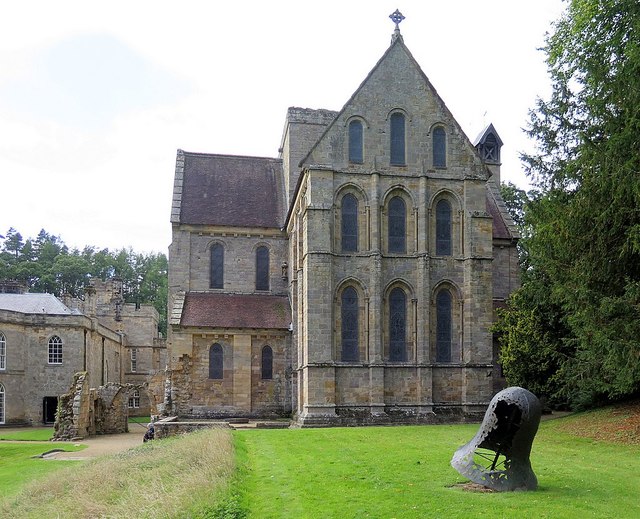
Some tales suggest that the raiders started a fire. The flames licked higher and ate through the timbers of the bell tower. The wood gave way, and the bell crashed to the bottom of the tower before rolling into the river.
Others think the monks returned to the priory after the raiders had gone. They took down the bell and threw it in the river as punishment for betraying them. (If that’s the case, I dread to think what they did to the young monk that rang it)
A third variation claims the monks actually put the bell in the river to save it from future raids. A deep part of the Coquet, overlooked by the bell tower, is known as the Bell Pool. William Howitt opts for this option, claiming the bells were put in the pool to keep them from the reach of raiders (1840: 526).
As late as the 1880s, local children swam in the Bell Pool, diving for the bell. And why wouldn’t they? The bells were the lost treasure, after all! No one ever managed to reach the bells but according to Howitt, whenever anyone does manage to find the bells, they’ll recover other treasures with them (1840: 526).
Strangely, it’s not the only local legend about the Brinkburn bells.
After a series of financially inept priors ruined their funds, the Priory was finally taken under the direction of the monastery at Durham. Under the agreement, the Bishop of Durham would pay Brinkburn’s debts and repair the damage caused by the raids.
There was one condition.
The Brinkburn Bells were the envy of the North. The Bishop of Durham wanted them for his own monastery, in exchange for his aid. Eventually, the Brinkburn monks agreed and workmen removed the bells from the tower.
A long, winding road leads out of the valley.
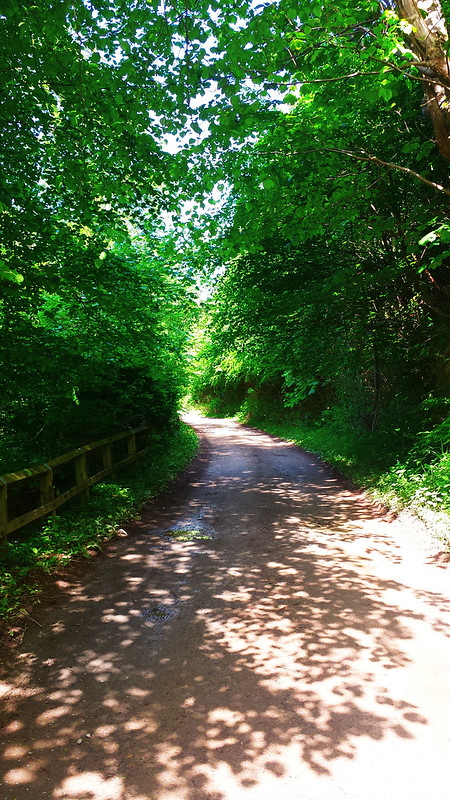
While the men took the bells up the road, the horses pulling the carts went into a frenzy. No one could control them or persuade them to calm down. During the fracas, the carts overturned, and the Brinkburn bells fell into the river. The men and the monks mounted several rescue attempts, but to no avail. The river Coquet retained its prize.
There is an alternative version of this story. In the other tale, the men got as far as the River Font. The waters ran faster than usual, swollen by heavy rainfall, and the horses lost their footing in the middle of the river. The Brinkburn bells fell into the water.
The monks tried to rescue the bells, but try as they might, they couldn’t reach them. They reported the disaster back at Brinkburn. The prior sent a message to Durham to explain what had happened. The Prior of Durham arrived, probably suspicious about the sudden turn of events, and the pair of them rode into the river.
Divine assistance appeared on their side and the monks finally recovered the bells. Michael Denham ascribed this to “the superior abilities of high church functionaries over humble monks” (1895: 132). A Coquetdale saying affirms that “Brinkburn bells are heard at Durham”, and Wallis confirms that the bells ended up in Durham in his History of Northumberland (Denham 1895: 132).
Who knows if the bells remain in the river, or now hang in Durham Cathedral?

The local fairy population favours the area too.
There are many tales of fairies north of Hadrian’s Wall, and this area is no different. There’s a dark chasm where the Brink Burn flows into the river Coquet and local lore suggests fairies are particularly fond of this spot. While it’s rare for a fairy to die, they use the area as a graveyard when one of their number passes on. Local tales tell of funeral processions to carry the dead to Brinkburn.
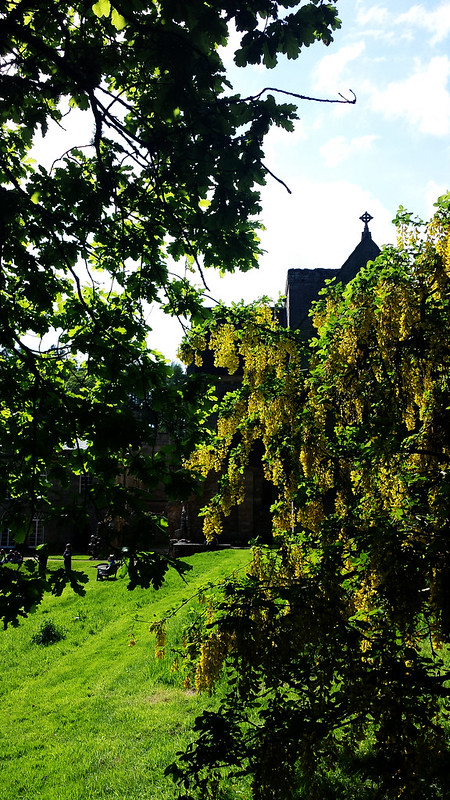
An 1888 guide to Northumberland noted Brinkburn’s own grounds as the burial place of the fairies, rather than the chasm. This belief may have come from the works of MA Richardson, who noted in 1846 that “In the sweet precincts of the solitude of Brinkburn, the villagers point out a shady green spot as covering the graves of the tiny people, and truly a more suitable place could not have been devised as the scene of so purely poetic a belief” (1846b: 48). Sadly, he doesn’t say where this shady green spot is.
The Faery Folklorist wonders if the peeling of the bells actually killed the fairies in the area (2011).
Malcolm Green suggests that the graveyard is more about the death of belief in fairies, rather than a literal graveyard. He cites MA Richardson, who claimed the fairies vanished when the clergy said their prayers there, and Reverend John Horsley, who claimed in 1729 the fairies were out of date (2014: 10).
Either way, Brinkburn Priory is a quiet, tranquil little spot. It’s easy to see why a belief in fairies would flourish in the area. Or even why they might choose to be buried here.
And who knows? Maybe they engineered the fall of the Brinkburn Bells into the river to get some peace?
I highly recommend a visit to the priory if you’re in the area. A mid-19th century restoration actually did the place justice, and the church boasts spectacular acoustics.
There’s also a manor house near the church. This would have originally been the monk’s refectory, but it was converted into a house when the site was leased to Cuthbert Carnaby in 1538. Richard Hodgson bought the house in 1810. He demolished its centre and western end, and rebuilt the house in the Tudor Gothic style in 1837. It’s certainly an odd building to wander around now!
What do you think happened to the Brinkburn bells? Let me know below!
If you enjoyed this post, consider signing up below to have them delivered to your inbox each week! I’ll also send you a guide to home protection the folklore way as a thank you.
References
Denham, Michael Aislabie (1895), The Denham Tracts: A Collection of Folklore : Reprinted from the Original Tracts and Pamphlets Printed by Mr. Denham Between 1846 and 1859, Issue 35, London: Folklore Society.
The Faery Folklorist (2011), ‘The Fairy Graveyard, Brinkburn Priory’, The Faery Folklorist, https://faeryfolklorist.blogspot.com/2011/04/fairy-graveyard-brinkburn-priory.html.
Green, Malcolm (2014), Northumberland Folk Tales, Stroud: The History Press.
Howitt, William (1840), Visits to remarkable places; old halls, battle fields, and scenes illustrative of striking passages in English history and poetry, London: Longman, Orme, Brown, Green & Longmans.
Richardson, M.A. (1841), The Local Historian’s Table Book, volume 1, Newcastle upon Tyne: M.A. Richardson.
Richardson, M.A. (1846a), The Borderer’s table book; or, Gatherings of the local history and romance of the English and Scottish Border, volume 5, Newcastle upon Tyne: M.A. Richardson.
Richardson, M.A. (1846b), The Borderer’s table book; or, Gatherings of the local history and romance of the English and Scottish Border, volume 7, Newcastle upon Tyne: M.A. Richardson.
Nutty about folklore and want more?
Add your email below and get these posts in your inbox every week.
You'll also get my 5-step guide to protecting your home using folklore!

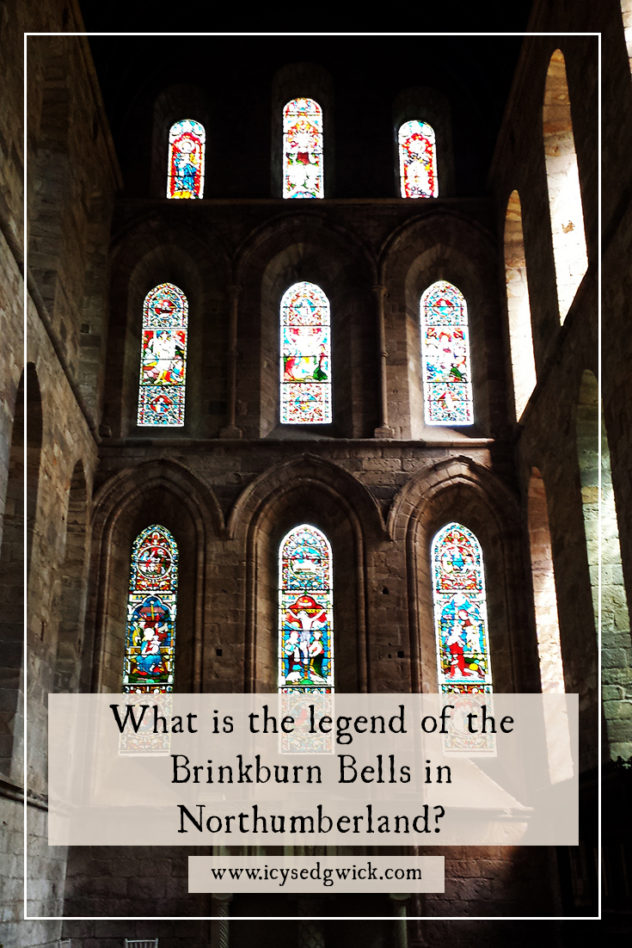






Is Sir Bertram Mitford related to the Mitford sisters?
Who are the Mitford sisters?
I like the second one – in my mind the bells are enchanted and magic kept them from leaving or maybe it’s darker and it’s a spell that prevented them from leaving the area? Either way awesome stories. I love that there are so many explanations for one historical event. Makes me wonder if we will ever know the truth.
I love it when the ‘experts’ disagree with each other as well!